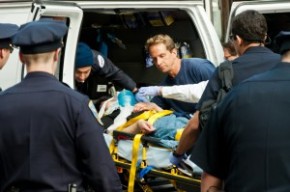Monthly Archives: January 2013
EMS Agency Creates New “STAR” Program to Increase Survival from Heart Attack and Cardiac Arrest
This SFDEM Blog is written by Ben Tanner, Hospital Liaison within the San Francisco Department of Emergency Management Emergency Medical Services Agency (EMS).
_______________________________________________________________________________________________________
Paramedics in San Francisco just gained new tools to help victims of heart attack or cardiac arrest. (Heart attack = someone alive with chest pain and an obstruction in one of the heart’s arteries; cardiac arrest = someone whose heart has stopped and needs CPR.) The San Francisco EMS Agency, which regulates paramedics, introduced a new “STAR” program on January 7th directing paramedics to transport these patients to specialized cardiac receiving centers.
Paramedics already provide life-saving treatment immediately after encountering someone with a heart attack. Previously, a victim might have been taken by ambulance to any of the eleven hospitals with emergency departments. Now these patients will only go to one of five “STAR” centers: California Pacific Medical Center (Pacific Campus), Kaiser Permanente, St. Mary’s, San Francisco General Hospital, or University of California San Francisco. The reason is simple: these five hospitals have cardiac catheterization laboratories where specially trained doctors and staff may feed a very small tube into the heart to relieve an obstruction that causes a heart attack.
For cardiac arrest patients regain their heartbeats but fail to wake up, paramedics will now use a procedure called “therapeutic hypothermia.” This procedure uses ice packs and/or chilled saline to slow the body’s metabolism and prevent brain damage caused by toxins that accumulate in the blood when someone has no pulse. Each of the five STAR hospitals will continue this treatment for up to two days, and may also need to provide survivors with cardiac catheterization if needed.
These changes bring San Francisco into the current standard of care advocated by the American Heart Association and provide better care and a better chance of survival to
For more on the new paramedic protocols, go to the SF DEM website.
_______________________________________________________________________________________________________
More About the Author:
Ben Tanner, MSN, RN, FNP, CNS, is an emergency nurse who designed the STAR program for the EMS Agency. Before nursing, Ben spent ten years in emergency medicine as an EMT and Paramedic, and 15 years as an American Heart Association instructor and regional faculty. He speaks Spanish and some French, and has trained nurses and doctors on four continents.
